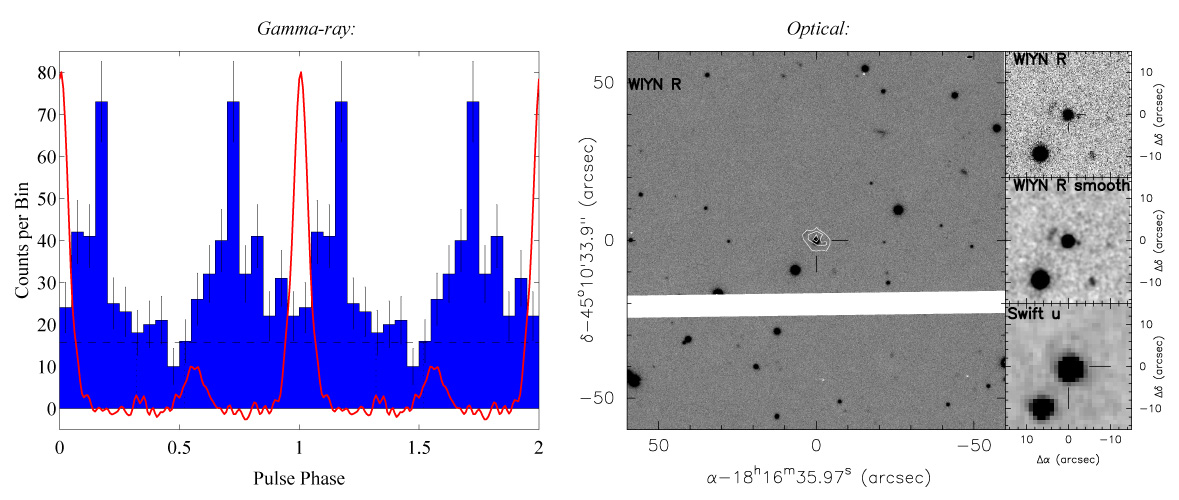| Description: | The energetic, eclipsing millisecond pulsar J1816+4510 was recently discovered in a low-frequency radio survey with the Green Bank Telescope, by an international team including ASTRON scientists Hessels, Kondratiev, and Van Leeuwen. With an orbital period of 8.7 hr and minimum companion mass of 0.16 Solar masses, the pulsar appears to belong to an increasingly important class of pulsars that are "eating" their low-mass companions. In such "black-widow" or "redback" systems, the energetic wind from the pulsar irradiates and ablates the companion, leading to long eclipses from ionized material in the systems. The companions are usually tidally distorted, filling a significant fraction of their Roche lobes, which along with heating from the pulsar wind leads to significant optical modulation, often over more than 3 magnitudes.
Led by David Kaplan (U. Wisconsin), this team recently reported the discovery of the gamma-ray counterpart to this 3.2-millisecond pulsar, and present a likely optical/ultraviolet counterpart as well. Using the radio ephemeris we detect pulsations in the unclassified gamma-ray source 2FGL J1816.5+4511 (Left panel on the image above; the new gamma-ray profile shown in blue, overlayed with the known radio profile in red), implying an efficiency of about 25% in converting the pulsar's spin-down luminosity into gamma-rays, and adding PSR J1816+4510 to the large number of millisecond pulsars detected by Fermi. The likely optical/UV counterpart was identified through position coincidence (< 0".1) and unusual colors (Right panel on the image above). Assuming that it is the companion, with R = 18.3 mag and an effective temperature of about 15,000K it would be among the brightest and hottest of low-mass pulsar companions, and appears qualitatively different from other eclipsing pulsar systems. In particular, current data suggest that it is a factor of two larger than most white dwarfs of its mass, but a factor of four smaller than its Roche lobe. We discuss possible reasons for its high temperature and odd size, and suggest that it recently underwent a violent episode of mass loss. Regardless of origin, its brightness and the relative unimportance of irradiation make it in ideal case to determine the companion mass and hence, in turn, the mass of the pulsar.
|

